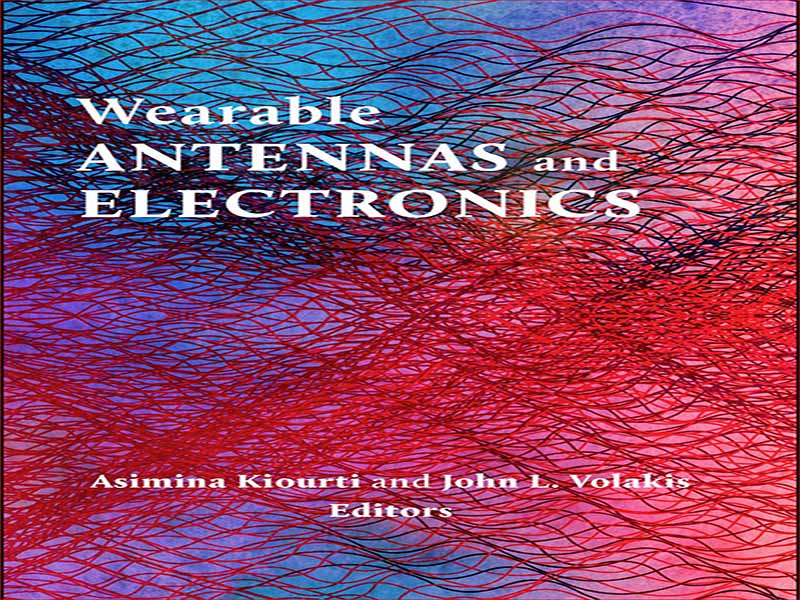- عنوان مجله: Wearable Antennas and Electronics
- نویسنده: Asimina-Kiourti,-John-L.-Volakis
- حوزه: آنتن
- سال انتشار: 2022
- تعداد صفحه: 293
- زبان اصلی: انگلیسی
- نوع فایل: pdf
- حجم فایل: 9.29 مگابایت
پوشیدنی ها به عنوان فناوری های الکترونیکی گنجانده شده در لوازم جانبی یا لباس هایی که می توانند به راحتی روی بدن پوشیده شوند، تعریف می شوند. این رویکرد در سالهای اخیر با هدف ترکیب دستگاههای بیسیم هندزفری در لباسهایی برای ارتباطات و حس، از جمله جمعآوری اطلاعات برای اینترنت اشیا (IoT) و برنامههای پزشکی مورد توجه قرار گرفته است. نکته قابل توجه، مفهوم پوشیدنیها به قرن سیزدهم بازمیگردد و علاقه دوباره به لباسهای هوشمند از دهه 2000 شروع شد. عینک اولین ابزار پوشیدنی پرمصرف بود، پس از آن اولین ساعت مکانیکی جیبی در قرن شانزدهم و حلقه های چرتکه در قرن هفدهم، که بیشتر توسط تاجران چینی به عنوان ابزار شمارش برای محاسبات سریع استفاده می شد. از دیگر نمونههای پوشیدنیها میتوان به اولین ساعتی که در سال 1810 برای ملکه ناپل روی مچ دست طراحی شد و دستگاههای زمانبندی پنهان شده در کفشها برای تقلب در بازیهای رولت در دهههای 1960 و 1970 اشاره کرد. کامپیوترهای پوشیدنی اولین بار در دهه 1980 معرفی شدند و در دهه 1990 سیستم های پوشیدنی از جمله سیستم موقعیت یابی جهانی (GPS) و نمایشگرهای چشم خصوصی مورد توجه قرار گرفتند. اولین سخت افزار محاسباتی پوشیدنی تجاری موجود در همان دهه توسط Rockwell International توسعه یافت. در دهه 2000، پیشرفت در زمینه ابزارهای پوشیدنی نسبتاً آهسته بود، اما در سال 2010، تلاش ها بر روی ابزارهای پوشیدنی با عملکردهای پیچیده (یا هوشمند) با رشد چشمگیر و استفاده همه جانبه از دستگاه های بی سیم در هر جنبه ای از زندگی روزمره تشدید شد.
Wearables are defined as electronic technologies incorporated into accessories or garments that can be worn comfortably on the body. This approach has gained much interest in recent years with a goal to incorporate hands-free wireless devices into garments for communications and sensing, including information gathering for the Internet of Things (IoT) and medical applications. Notably, the concept of wearables dates back to the thirteenth century with renewed interest in smart wears starting in the 2000s. Spectacles were the first widely used wearable, followed by the first pocket mechanical watch in the sixteenth century, and abacus rings in the seventeenth century, mostly used by Chinese traders as counting tools for quick calculations. Other instances of wearables include the first watch designed to be worn on the wrist for the Queen of Naples in 1810, and timing devices hidden in shoes to cheat in roulette games in the 1960s and 1970s. Wearable computers were first introduced in the 1980s, and in the 1990s wearable systems were considered, including Global Positioning System (GPS) and private eye displays. The first commercially available wearable computing hardware was developed in the same decade by Rockwell International. In the 2000s, progress on wearables was relatively slow, but in the 2010s efforts on wearables with sophisticated (or smart) functionalities was intensified by the dramatic growth and ubiquitous usage of wireless devices in every aspect of daily life.
این کتاب را میتوانید از لینک زیر بصورت رایگان دانلود کنید:
Download: Wearable Antennas and Electronics




































نظرات کاربران